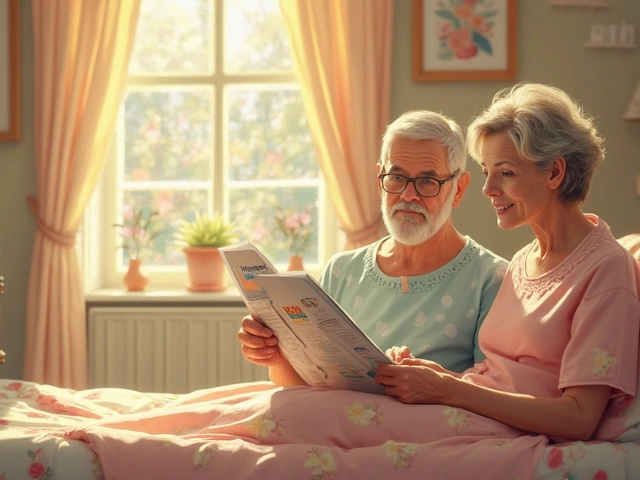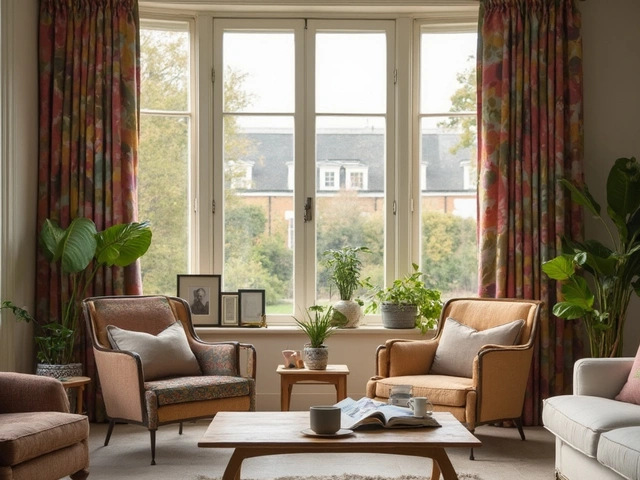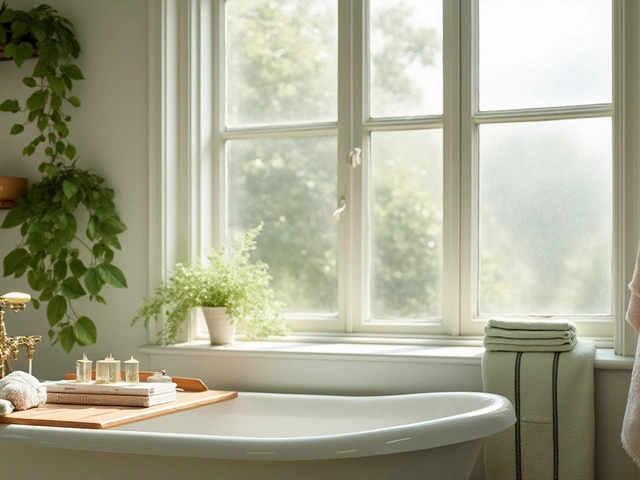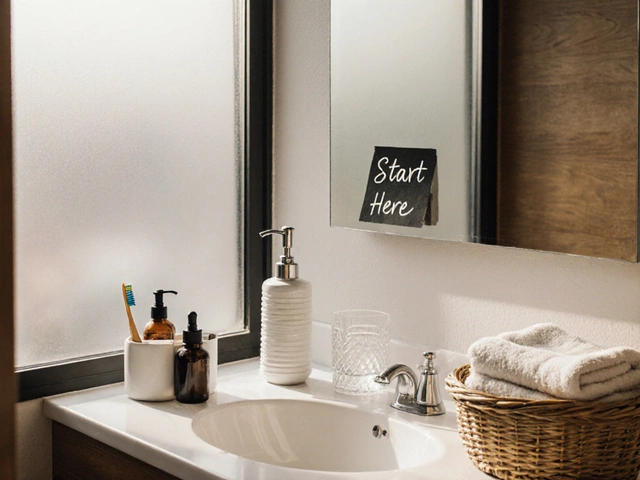Boost Home Value with the Best Bathroom Color Choices
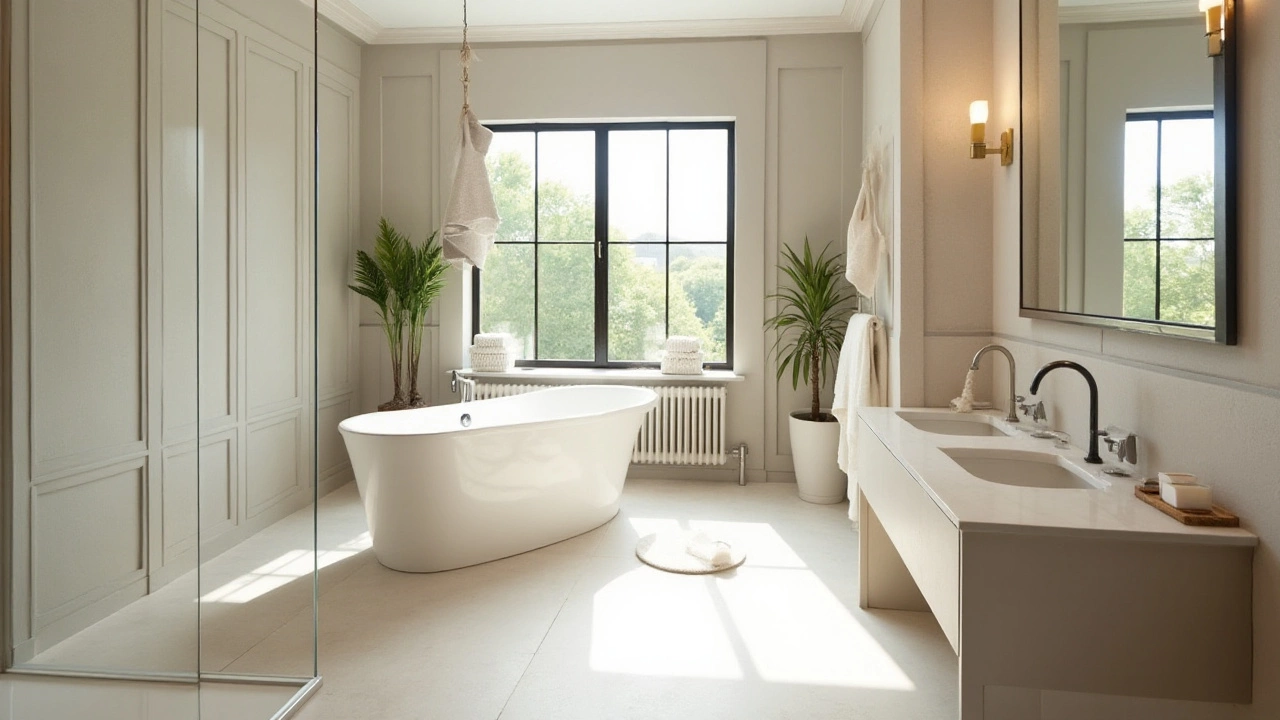
Ever thought that the color of your bathroom could influence your home's value? As surprising as it sounds, the paint color of your bathroom can have a notable impact on potential buyers and how they perceive the property. It's not just about aesthetics; it's a blend of psychology and practicality playing a clever game of persuasion.
Color theories teach us that soft, neutral shades can evoke calmness, making spaces feel open and inviting. This has made them popular choices for homeowners looking to make a smart, strategic improvement. Whether you're selling your home or just aiming to give it a fresh look, understanding which colors enhance home value can be a worthwhile endeavor.
- The Impact of Color on Home Value
- Trending Bathroom Colors and Their Benefits
- Choosing the Perfect Shade for Your Space
- The Psychology of Colors in Bathrooms
- Practical Tips for Painting Your Bathroom
The Impact of Color on Home Value
Choosing the right color for your bathroom can be more strategic than you'd imagine. Colors have the power not only to transform spaces visually but also to affect the perception of your property's worth. A well-painted bathroom speaks volumes about the care and thought put into home maintenance and aesthetics. Neutral colors, in particular, have taken the real estate world by storm. These shades, like soft grays, classic whites, and warm beiges, appeal to potential buyers because they offer a blank canvas. These colors allow buyers to envision their own decor without clashing against existing walls.
Interestingly, studies have shown that a blue bathroom can notably increase the selling price of a house. According to a report from Zillow, homes with light blue or periwinkle bathrooms sold for around $5,400 more than expected. This statistic highlights how color choice can translate directly into financial value.
People looking to buy homes appreciate when previous owners save them from the task of repainting soon after purchase. A home that feels ready-to-move-in is far more attractive. Light hues reflect more light, making small bathrooms feel more expansive and open. It’s a neat trick often used by interior designers to make areas look spacious and airy, enhancing the overall allure of the home. Buyers often connect emotionally to homes that feel inviting and ready for their personal touch.
The psychology of colors also comes into play here. Soft, neutral bathroom colors often evoke feelings of cleanliness and serenity. Potential buyers stepping into a tastefully colored bathroom immediately experience a sense of luxury and tranquility. These emotions can lead them to envision themselves living in the house, making them more likely to place an offer. A research report from the National Association of Realtors highlights that first impressions often seal the deal in property sales, and color contributes significantly to these initial sentiments.
"Color accounts for 60% of our response to an object or a place," explains Leatrice Eiseman, a color specialist and executive director of the Pantone Color Institute, emphasizing the profound impact of color perception on decision-making processes.
A simple change in color can increase your home's perceived value and marketability. It also helps potential buyers see how the rest of the decor can fit, which can be crucial in their purchasing decision. The flexibility that a neutral, soft-colored bathroom provides is akin to providing a piece of art with the perfect frame; it enhances the beauty and clarity of everything else around it. When selling a house, it's these small, subtle details that can make all the difference.
Trending Bathroom Colors and Their Benefits
When it comes to boosting the value of your home, paying attention to bathroom color trends can be an effective strategy. Soft whites, grays, and shades of blue have become top choices for many homeowners. These colors are not just a fad; they offer enduring appeal that resonates with a wide audience. White and gray provide a sense of spaciousness and cleanliness, which is crucial in a room known for its water-intensive usage. Blue, reminiscent of calm waters, instills a sense of tranquility that buyers find irresistible. These soothing hues are like an instant spa treatment, creating a peaceful sanctuary right at home.
Though it may seem subtle, the color of a bathroom can trigger feelings. For instance, a pale blue bath often evokes serenity. Neutral tones like beige or taupe are popular for their ability to complement almost any interior style, making them ideal if you want flexibility in staging your home for potential buyers. These colors aren't just about looks; they are practical too. Light colors are known to reflect more light, making spaces feel airy, which is particularly beneficial in bathrooms that lack abundant natural light. A bright bathroom is more inviting and gives the impression of a larger space, key selling points for many prospective homeowners.
Experts from Zillow's 2022 Paint Color Analysis revealed that homes with blue bathrooms typically sold for $5,440 more than expected.
"Color choice is crucial because it helps potential buyers visualize their future space. Bathrooms painted light blue or periwinkle can translate to a higher offer price," notes Amanda Pendleton, Zillow's home trends expert.Such insights suggest that color is not merely cosmetic but a pivotal part of a selling strategy. Beyond blue, shades like greige, a blend of gray and beige, are celebrated for balancing the cool and warm tones of a space. This reversible patina appeals to those with varied taste without being overwhelmingly stark or dull.
Adding these colors to your bathroom does not only elevate its visual appeal but can offer practical benefits. Neutral and soft colors are less likely to clash with other elements of decor like tiles or fixtures, ensuring a cohesive look. They also make it easier for future owners to make their mark without extensive remodeling. As such, while stark, bold colors may assert personality, they are often more polarizing. Soft, trending colors, though, simplify the buying decision by skewing towards broad appeal. These choices achieve a harmonious blend of style and functionality that today's homebuyers often demand.
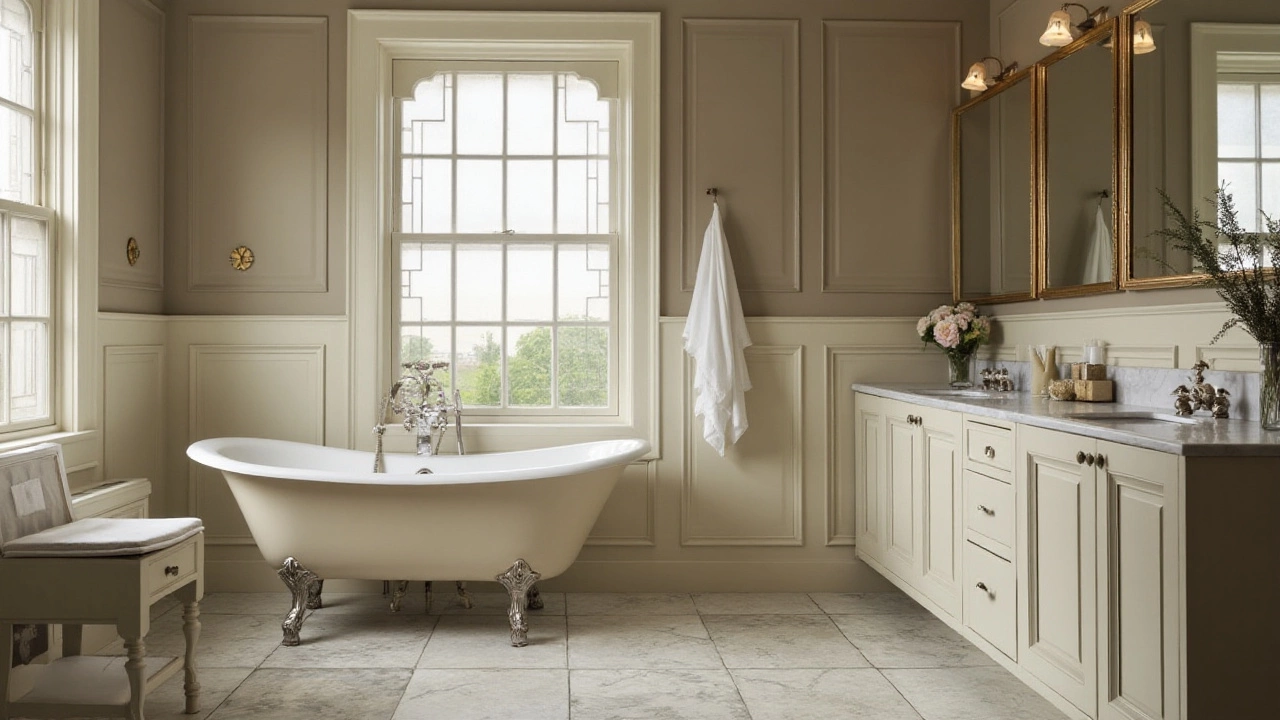
Choosing the Perfect Shade for Your Space
Color selection is an art form that transcends simple aesthetics. In the context of improving home value, choosing the right bathroom color requires balancing personal taste with universal appeal. The goal is to find a shade that complements your home’s style while also resonating positively with potential buyers. Traditional wisdom suggests that light colors make spaces feel larger and more open, making them ideal for enhancing a bathroom's perceived size. White, beige, and light gray continue to be top picks, thanks to their neutrality and the subtle elegance they encapsulate. These hues allow you to incorporate bold accents in accessories without overwhelming the space.
Pastels have made a comeback in recent years, offering a fresh take on traditional neutrals. Soft blues and greens, inspired by the tranquility of nature, are no longer considered daring choices but are celebrated for creating a soothing atmosphere. Studies have shown that such colors can even influence mood, with blue often associated with serenity and green with calmness and restfulness. For those looking to add a touch of warmth, sands and light terracottas can introduce a comforting, earthy touch without veering into overwhelming territory.
If you’re feeling adventurous, adding a splash of darker color accents, like navy or charcoal, can add depth and sophistication. This could work well when balanced with ample natural light or white fixtures. Bear in mind the natural light available in your bathroom when selecting a paint color. A shade can appear drastically different under various lighting conditions, so it's essential to test samples at different times of the day.
"A home is not just a building; it is a tapestry of experiences waiting to unfold," according to interior design expert Charlotte Moss.A strategic shade can set the stage for these experiences, adding a layer of richness to everyday rituals.
To help make your choice, consider preparing a mood board with fabric swatches, wood finishes, and samples of potential wall colors. This can provide a visual guide and help you better understand how different elements will interact. Paint companies often offer apps or online tools that can visualize paint options in your space, providing an additional layer of certainty before committing to a decision. Home value is as much about the emotional connection a space creates as it is about square footage and location, and every detail plays its part. Use colors to weave a visual story that resonates emotionally with potential buyers.
If statistics are more convincing, a recent report from Zillow showed homes with bathrooms painted in light blue or periwinkle sold for an average of $5,400 more than expected. While this may not be a rule set in stone, it certainly highlights the power of a strategic color choice. It underscores how a simple yet thoughtful decision like choosing the right paint can yield so much more than just aesthetic rewards.
The Psychology of Colors in Bathrooms
Color is a powerful tool that can immediately alter mood and perception, a phenomenon deeply rooted in human psychology. When it comes to choosing bathroom colors, understanding the psychological effects these hues can have on potential buyers is crucial. Soft blues and greens often evoke feelings of tranquility and relaxation, akin to experiences in nature, making them ideal for creating a spa-like atmosphere. Such colors can help to alleviate stress, which is an appealing trait for potential homeowners seeking a peaceful sanctuary in their bathroom spaces.
On the other end of the spectrum, neutral tones like beige, gray, and white are often perceived as clean and minimalist, which is not surprising. They provide a versatile backdrop that allows homebuyers to envision themselves and their personal style in the space. According to a study by Zillow, homes with light blue bathrooms sold for approximately $5,440 more than expected, highlighting the substantial impact a simple color change can make. It's interesting to note how subtle shifts in hue can influence buying decisions so dramatically.
Color Perception and Emotional Response
Diving deeper, different colors carry various emotional meanings and can subtly influence our behavior. For example, warm colors like reds and oranges might not be the best for a bathroom, as they can increase energy levels and even stimulate appetite—attributes more suited to kitchens and dining areas. Conversely, colors with cooler tones, especially those with soft undertones, are known to promote calmness and relaxation. Traditional white symbolizes purity and expansiveness, capable of making smaller bathroom areas appear larger and more inviting.
"Color does not add a pleasant quality to design – it reinforces it," said Pierre Bonnard, a master of modern art, emphasizing the intrinsic role color plays in space perception.
The psychology behind colors extends beyond mood; it also impacts how we interact with the space around us. This is particularly true in bathrooms, where the right hue can make a compact space feel open and airy. The choice of color reflects intentions—whether you want to create a family-friendly zone with vibrant, cheerful palettes, or a sophisticated, elegant retreat with muted, subtle tones. In mastering this color palette understanding, one not only enhances the bathroom's allure but solidifies the home's value proposition significantly.
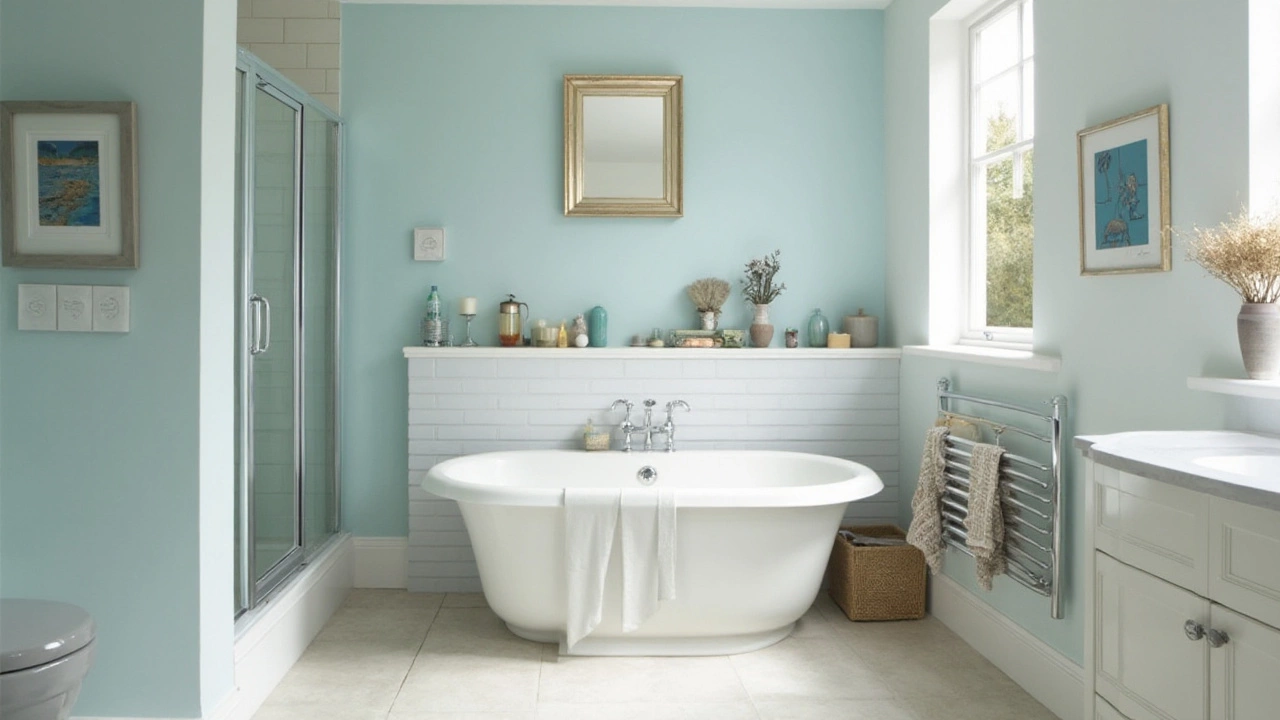
Practical Tips for Painting Your Bathroom
Transforming your bathroom with a fresh coat of paint might appear straightforward, but there are crucial steps to consider for achieving a stunning, durable finish. Bathrooms have unique needs due to their typically high humidity and frequent use, so it’s vital to select the correct paint type. Start by choosing a paint with a satin or semi-gloss finish. These are most suitable for bathrooms as they are moisture-resistant and withstand frequent cleaning. Avoid matte finishes, which can absorb moisture and lead to mildew over time.
Before you even think about applying that first coat of bathroom color paint, it's essential to thoroughly prep the walls. Clean surfaces are a must to ensure the new paint adheres properly. Begin by washing the walls with a mild detergent or a vinegar solution to strip off any soap scum or oil residues. Once clean, inspect for any mold or mildew—black spots are usual suspects in these damp spaces. Use a specialized cleaner if needed, and let the walls dry completely. Patch up any cracks or holes, then sand them smooth to create an even surface ready for painting.
When you are set on the perfect shade from your selection of trending paint colors, don't skip on using a primer. A high-quality primer creates a uniform surface and enhances the paint's durability. It’s particularly important if you’re making a drastic color change, say from dark to light. Apply primer using even strokes, and once it’s completely dry, go ahead with your chosen hue. Use painter’s tape along the trims and edges to ensure a clean line and achieve a professional finish.
Move on to the actual painting process with patience and precision. Bathrooms, often being smaller, require attention to detail. Start painting around the edges with a brush before using a roller for the larger areas. This method prevents misshapes around corners and edges. Apply two coats if necessary, allowing ample time for the paint to dry between each. Remember, well-applied paint not only looks good but also adds value to your home.
Consider adding some flair with an accent wall or ceiling color that complements the new bathroom design. A splash of a slightly darker or lighter shade can add depth and interest without overpowering the space. In the words of a renowned interior designer, “The right bathroom color creates the backdrop for tranquil moments,” as noted in Living Space Magazine. Implement contrasting accessories like rugs or towels to bring everything together elegantly.
To help maintain your newly painted surfaces, ensure your bathroom has adequate ventilation. A working exhaust fan that efficiently moves moisture out of the air is your paint’s best friend. Couple this with regular cleaning to prevent the buildup of mold and mildew. By using these practical tips and making smart choices, not only will your bathroom look inviting, but it will also appeal to potential buyers if you ever decide to sell your home.

